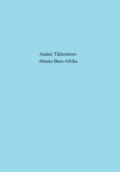
Андрей Тихомиров
From the history of Orenburg region
Gradually, the rented places merged with the former settlement and the name "Rent" passed to that part of the former settlement, which was located under the mountain. The final merger took place during the years of Soviet power, when by the end of the 30s the southern side of 1st Goncharnaya Street, now Musa Jalil (Jalil (Zalilov), was built up Musa Mustafievich (1906-1944) was a Tatar Soviet poet, Hero of the Soviet Union, winner of the Lenin Prize, executed by the Nazis in the Moabit military prison in Berlin).
The low-lying nature of the area and the presence of a Bathing lake prevented further progress of the settlement and rented places to the west. The latter existed until 1957, when almost all of it was filled in to allocate space for individual construction. In 1959, new streets appeared here.
The Orenburg Educational District played a special role in the development of education in the Orenburg province. In 1875, it was decided to allocate a separate Orenburg educational district from the Kazan District, which included educational institutions located on huge areas. Today, Bashkortostan, Orenburg, Perm, Sverdlovsk, Chelyabinsk, Kostanay, Aktobe and Ural regions are located on this territory. The task of the educational district was to form a network of educational institutions, monitor its functioning, assist in providing educational institutions with teaching staff, educational and methodological tools. P.A. Lavrovsky, a philologist by education, a man who had scientific works on Slavic philology and experience in pedagogical and organizational work as rector of the University of Warsaw, was appointed its first trustee. By January 1, 1875, that is, by the time the Orenburg Educational District was opened, there were six men's gymnasiums and one men's gymnasium in Menzelinsk within its territory in the cities of Orenburg, Troitsk, Uralsk, Ufa, Perm, and Edinburgh.
The growth of industrial and agricultural production, the development of culture and trade in the Orenburg province in the XIX century caused an ever-increasing need for educated people. Although slowly, the network of educational institutions in the province expanded. New educational institutions were opened, including urban and rural primary schools of various types and departmental subordination, gymnasiums, theological seminaries and theological schools. In Orenburg, in particular, the second cadet corps, a teacher's institute, a theological seminary, a theological college, a vocational school, a diocesan women's college, etc. were opened.
The board of the Orenburg Cossack army conducted an active educational policy in the XIX century. The first school in the Cossack settlements was founded in 1823 in the Sakmar village. It was designed for 40 students from among the senior and Cossack children. By 1835, the number of such schools had increased to thirty, and by 1848, schools were opened under each village board. Their number reached 69, 1350 male students were engaged in them (Sevastyanov S.N. School education in the Orenburg Cossack army for 1819-1895, Orenburg, 1896). Since the middle of the XIX century, along with schools for boys, educational institutions for girls began to open in Cossack villages and settlements.
According to the data from the "Statistical Essay of the Orenburg province", 1892, pp. 17-19, characterizes the results of the development of the network of educational institutions in the Orenburg province as of 1890. According to the data in this table, in 1890 there were 630 educational institutions in the province, in which 36,052 students studied, including 26,062 males and 10,590 females. The increase in the number of educational institutions and students compared to the early years of the century, when there were only a few schools, is noticeable. Especially significant was the increase in the number of schools in the second half of the XIX century, primarily advanced schools that provided secondary full and incomplete, secondary vocational education (Bolodurin V.S. Education and pedagogical thought in Orenburg region. Orenburg Book Publishing House, 2001, p. 29).
However, one should not exaggerate the results of the development of education in the XIX century in Russia as a whole and, in particular, in the Orenburg province. Russia continued to lag far behind most European countries and the United States in terms of the spread of education. At the end of the 19th century, compulsory primary education was introduced in a number of these countries. The indicators of educational development in the Orenburg province were below the average in Russia. In the 19th century, the province continued to be among the backward regions of the country, especially in the formation of secondary and higher education. With the presence in Russia in 1892 of 167 male, 143 female gymnasiums and 105 real schools (Dneprov E.D. School in Russia in the second half of the XIX century//Soviet Pedagogy, 1975, No. 9, p. 113) in the Orenburg province there were only two male and one female gymnasiums. The first real school, the curriculum of which more reflected the demands of the new emerging technocratic society, opened in Orenburg only in 1895. The situation with secondary education in the province was significantly improved by the presence of two cadet corps, a theological seminary, the Nikolaev Institute for the Education of girls and a women's diocesan school. There were no higher educational institutions at all in the Orenburg province at the end of the XIX century.
The literature used
Bolodurin V.S. Education and pedagogical thought in Orenburg region. Orenburg Book Publishing House, 2001
Dneprov E.D. School in Russia in the second half of the XIX century//Soviet Pedagogy, 1975, No. 9
Mirsaitova S.G. Public education in the Southern Urals in the first half of the XIX century. Yekaterinburg, 2000
Orenburg: handbook, Y.D. Garankin, V.V. Dorofeev, A.N. Zhilin. Chelyabinsk, South Ural Book Publishing House, 1985
Sevastyanov S.N. School education in the Orenburg Cossack army for 1819-1895, Orenburg, 1896
Tikhomirov A.E., Historical research. LAP LAMBERT Academic Publishing, 2014
Tikhomirov A.E., Science confirms – 26. "Ridero", Yekaterinburg, 2023
Tikhomirov A.E., Industry of Orenburg region. Industrialization in the 20-30s of the XX century. "Ridero", Yekaterinburg, 2018
Tikhomirov A.E., Collection of articles in 2015, "PoLyART", Orenburg, 2016
Books on the topic "History of Orenburg region"
Kocharyan M.A., Tikhomirov A.E., Vahan Teryan – poet and public figure. LitRes, Moscow, 2023
Musukeeva A.R., Tikhomirov A.E., Hero poet. LitRes, Moscow, 2023
Raizikh L.L., Tikhomirov A.E., Orenburg Germans. LAP LAMBERT Academic Publishing, 2013
Tikhomirov A.E., From the history of the Germans of Orenburg region. Collection of articles. "Ridero", Yekaterinburg, 2018
Tikhomirov A.E., Turning over the pages of the history of Orenburg region. LitRes, Moscow, 2023
Tikhomirov A.E., Pushkin and Dahl in Orenburg region. LitRes, Moscow, 2023
Tikhomirov A.E., Chkalovskaya (Orenburg) region during the Great Patriotic War, "Ridero", Yekaterinburg, 2022
Tikhomirov A.E., The industry of the Southern Urals during the NEP and pre-war five-year plans. LAP LAMBERT Academic Publishing, 2012
Tikhomirov A.E., Tikhomirova G.M., The Southern Urals is the homeland of the Indo–Europeans. LAP LAMBERT Academic Publishing, 2016
Tikhomirov A.E., Tikhomirova G.M., The emergence of Indo-Europeans. The formation of a linguistic community in the Southern Urals. "Ridero", Yekaterinburg, 2017
Tikhomirov A.E., Industry of the Southern Urals. Industrialization in the 20-30s of the XX century. "Ridero", Yekaterinburg, 2018
Tikhomirov A.E., Meru – Ural Mountains? LitRes, Moscow, 2023







